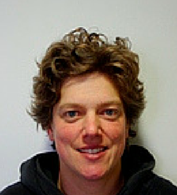In the late 90s, Associate Professor Barbara Holland was a PhD student in the field of Vehicle Routing and Transportation. Attendance at a lunchtime seminar given by Professor Mike Waterman, of Human Genome Project fame, changed everything.
The idea of using mathematics to answer some of the big questions in biology was a revelation to me.
“I loved the idea that the maths I enjoyed, building statistical models and optimisation, could be applied to evolutionary puzzles.” And the rest, as they say, is history.
Through mathematical analysis of DNA sequences and molecular phylogenetics (analysing hereditary molecular differences) we can construct a ‘phylogenetic tree’.
“Phylogenetics helps us understand the past and to predict the future in so many areas. It helped track the transmission routes of the deadly Ebola virus, was a key factor in establishing the source of the bacteria responsible for an extraordinarily high rate of food poisoning outbreak in New Zealand, and is now being used to predict the next most likely dominant flu virus to hit our shores.”
But it doesn’t stop there. By tracking mitochondrial DNA, the movements of the Polynesian people across the pacific 800 years ago, and the attendant Maori oral tradition relating to a deliberate migration to New Zealand, have been corroborated.
The applications for mathematical biology in its various forms are endless, and they will inform our future and help us to better understand our past.
Her major projects have included working out rates of evolution in the Adélie penguins of Antarctica, and developing a method for visualising conflict in sets of phylogenetic trees, which she considers to be among her most significant work to date. In the future, she would like to use mathematical biology to expand our understanding of the Tree of Life.
“I’d like to work out if the Tree of Life really is a tree or if it is more of a tangled web. A lot of species like bacteria and the local eucalypts don’t seem to have read the textbooks on the Biological Species Concept. Instead, they seem to be swapping parts of their DNA. It would be fantastic to use DNA data to help untangle that web!”
Keen to make your own discoveries? Apply now to become a research student.
